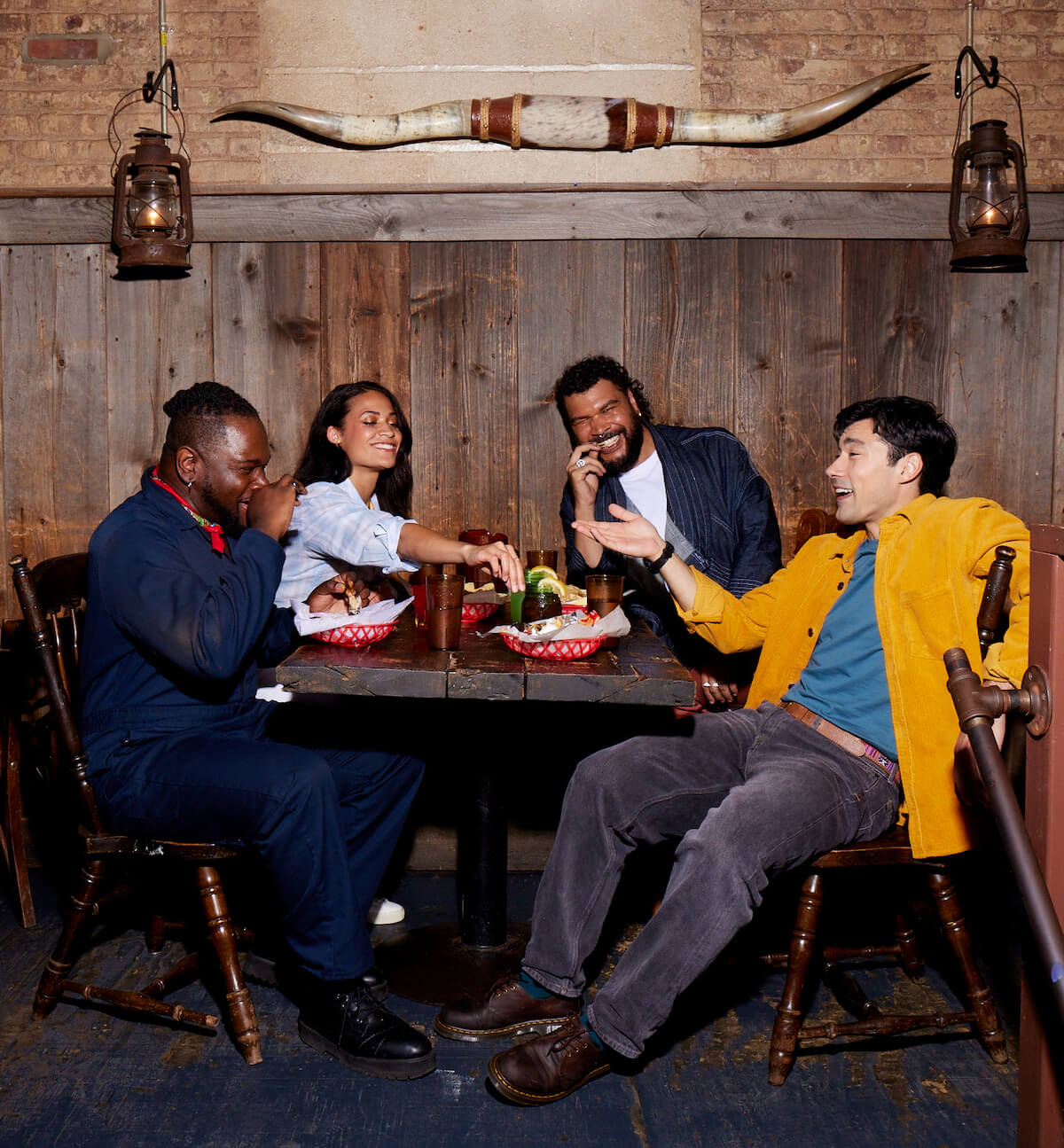How to streamline your restaurant menu (and make it more profitable)

Skip the article and turn takeaways into action by scheduling a call with our team
Spring cleaning is a literal and metaphorical process of self-evaluation, and can be applied to a ton of different concepts. You look at what you need and don’t need, and what’s working well and what isn’t, and then toss or replace what’s not working. This concept certainly applies to the restaurant industry—revamping a menu can be one of the best investments of time in the business.
We all know the story right now. Costs are up across the board, from food costs to labor costs to rent and more. Restaurant owners need to be savvy and keep an eagle eye on their bottom line to ensure their business, y’know, stays in business.
Fortunately, there are a number of ways to streamline a menu that result in improved restaurant profit margins. While switching up menu items is certainly an important part of the process, for example, there are many other tweaks that a restaurateur can make to their menu to help boost profits.
Whether you’re running a full-service restaurant, a food truck, or a fast food joint, the principles are the same. Your menu is the single most important piece of information customers and potential customers have about you, so it deserves a lot of attention. How can that attention be best directed, you ask? Let’s find out.
Streamlining menu items

Probably the first thing someone thinks about when they consider updating their menu is how to switch up their menu items. This is for good reason: After some time, you’ll likely have noticed which dishes are most popular, which are least, which ones are most profitable, and so on. Customers constantly leave a trail of feedback, both intentional and unintentional, that an observant restaurateur can make great use of. What dishes are shared the most on social media, for example? What do you overhear customers saying in the restaurant? As a restaurant owner, I paid close attention to details like this because honest feedback is often told in actions more than words.
Be sure to consult your restaurant manager, servers, and kitchen staff as well before changing up your menu. Experienced staff certainly have valuable observations you may not have considered.
Are there any dishes that get consistently high praise, or are there any that often come back unfinished? What dishes do your chefs like cooking, and which ones are a hassle? Are there any common requests you can add to the menu? Keep an eye on what your menu stars and flops are so you can cut the underperformers.
Ditch the flops
It’s often surprising to a restaurateur just what dishes are the most and least popular. Keep an open mind when it comes to axing a dish from your menu that just isn’t cutting it. To help figure out which dishes are on the chopping block, break them into four categories:
- High food cost, popular items
- Low food cost, popular items
- High food cost, unpopular items
- Low food cost, unpopular items
The first dishes to get tossed should be the high food cost, unpopular items. If no one wants the Bigfoot tartare, you’ll save a bundle by not buying the product to begin with.
Inventory management software can help you keep track of what’s selling and what isn’t. If you’re consistently left with a specific unsold product, there’s no point in keeping it on the menu.
Limit your menu
Keeping your menu limited to a manageable number of items is an excellent way to boost your net profit margin. This is for a few reasons. First, a limited menu means less inventory, which means predictable food costs and less food waste. Second, focusing on dishes you know your staff can really nail—consistently and quickly—means more customers served, faster table turnover, and less stress and labor in the kitchen. Third, it helps a restaurant create a solid identity that makes a business stand out.
Not every restaurant can (or should) have a phonebook of a menu. So, pick a magic number of dishes that you want to have on your menu and stick to it. At my pub, the number was 10 entrees, three sides, and three appetizers, with regularly scheduled specials. My kitchen staff appreciated it, as did my customers, who had an easier time making choices when they weren’t overwhelmed with options.
Raise prices if you must
Naturally, you’ll want to keep a close eye on the changing cost of goods, and potentially change your menu prices to reflect changing costs. While many restaurateurs are reluctant to change prices for fear of scaring off customers, sometimes it’s simply necessary. What’s more, it’s no secret that inflation is happening—so honestly communicating the reason for price increases isn’t complicated.
If your options are to raise prices or go out of business, the decision is a no-brainer. If you notice your food costs are starting to be more than 30–35% of the cost of goods sold (COGS) on average, it may be time to raise prices. That doesn’t apply to every dish, of course—potatoes will always be more profitable than steak, for example, so their cost doesn’t need to change as much.
Reconsider portion sizes

For decades now, North American restaurants have been in an arms race to deliver ever-increasing portion sizes. While this can make you popular with customers who take home half their meal to finish later, it’s not ideal for restaurant revenue and your gross profit margin. If customers are consistently taking home food, you should reduce your portion sizes. You can reduce your menu prices somewhat to match—which may reduce gross revenue, but can improve net profit. Make sure not to make it an overly dramatic change without reducing prices, since you’ll (rightly) be accused of shrinkflation.
Slightly lower prices with smaller portions of the same quality can further help improve table turnover rates, meaning more customers can be served. And hey, everyone loves it when they see prices go down.
Keep up with trends
Make sure you’re paying attention to what’s happening with other restaurants in your area. Trends in dining are ever-changing, from food and drink preferences to décor and just about everything else. You don’t have to revolve your restaurant around trends, but keeping a keen eye on them helps ensure that your establishment doesn’t get that dated feel. Ideally, you’ll want to be ahead of the curve or even helping define trends with creativity. That’s one of the fun parts of the restaurant business: You get to experiment and figure out what works, and you may just strike gold.
Consider delivery-friendly foods
Delivery exploded in popularity during the pandemic, and it appears to be set to stay. While people are certainly dining out again, the rise of online ordering is a landmark change in the industry. So, consider: What dishes on your menu work well for delivery? Which ones don’t? Can you create new dishes with existing ingredients that will appeal to a delivery crowd?
This is not to say that you have to offer all your dishes for delivery. For example, I’ve got a personal pet peeve against the concept of delivery steak. It just seems … wrong. A delivery steak burrito, however, works just fine.
Menu engineering for the win

In addition to tweaking your menu offerings, take some time to tweak your menu itself. Menu engineering is a combination of an art and a science: Graphic design combined with mathematics and psychology. By designing your menu well, you can nudge customers to choose options that benefit both of you.
For example, high-profit items—or other items you want to highlight—should go towards the top and either the right or center of the menu. This is because people tend to read a menu by looking at the top right first, and then the center. Lower-profit items should go towards the bottom and the left.
Highlighting your signature items with different colors, larger fonts, or boxes can help encourage customers to pick those dishes. Additionally, highlighting both your high and low price points can help anchor customers’ expectations of costs.
We’ve got a full breakdown of menu engineering here, so be sure to take a look and consider what about your menu itself can be updated. Since not all restaurants practice active menu engineering, doing so can give you a significant edge over your competitors.
Streamline restaurant operations while you’re at it
If you’re in spring cleaning mode—changing up your menu, looking at your restaurant with a fresh perspective—consider also how you can improve your restaurant operations. Is the software you’re using working for you? Are you getting the metrics you need to make smart decisions? Do you have software that syncs with your point-of-sale (POS) system and your inventory management software?
Yelp Guest Manager can be a key piece of optimizing your operations. It’s got full-service online check-ins, waitlists, and reservations, top-of-the-line table management tools, and robust metrics to get you the data you need. It also pairs up with a slew of other software systems, like popular POS systems and third-party apps.
We know new systems can be daunting to dive into, which is why we’d love to show you all the bells and whistles in a free demo.
Reach out to us today for a free demo and you’ll see what the hype is about.